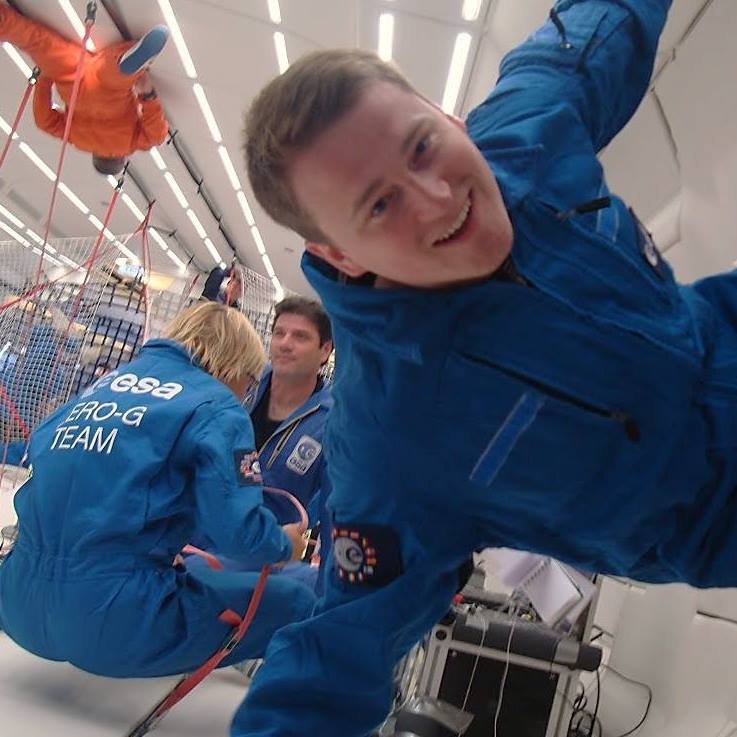Re-entering the world, the Astrobiologist talks life as an ‘astronaut’ in a NASA social experiment.
Samuel Payler, a PhD Student at the University of Edinburgh, has recently completed an eight month mission in NASA’s Space Exploration Simulation.
The ‘Mars’ habitat, located in Hawaii, is designed to replicate interplanetary conditions here on Earth.
Payler, an Astrobiologist, was one of six volunteer scientists to be selected for the mission – the fifth iteration of the project.
The team were completely closed off from the outside world and tasked with living and working as ‘astronauts’ in a confinement similar to the conditions in space.
Speaking to The Student, Payler described how the group met just a week before they were “chucked in a habitat for eight months, to see what would happen.”
With a 20 minute transmission delay, communication with headquarters was slow and contact with friends and family limited – leaving the crew with only each other’s company in the harsh conditions of ‘space’.
Designed to reflect the amount of room a crew on Mars is likely to have, the HI-SEAS habitat, run by the University of Hawaii, is the size of a small two-storey house.
Built 8,000 feet above sea level, the dome is on the Mauna Loa volcano, a site chosen for its isolation and Mars-like geology.
Each week, the crew left the restricted Space simulation and conducted field studies but freedom was limited as the group “had to contact mission support, tell them our plan and they had to approve.”
The days on the simulated Mars mission were “highly structured”, helping Payler to cope with the confinement.
The HI-SEAS team followed routines dictated by a piece of software also used on the International Space Station.
“Every day was so similar and you knew exactly what you were doing ahead of time,” Payler said. “[The time constraints] kept you focused on what you were doing.”
HI-SEAS, short for Hawaii Space Exploration Analog and Simulation, is one of the most extensive studies into the psychological challenges of leaving Earth.
Rather than an exploration of the crew’s surroundings, the mission focuses on the individuals that make-up the team.
While there are limits to replicating a Mars mission from our planet’s surface – notably “we can’t factor in the constant fear for your life,” remarked Payler – the social experiment is an attempt to better understand what helps a group complete an expedition effectively.
“[These studies can] dramatically increase the chances of a crew on a real Mars mission surviving,” explains Payler, with the research derived from the study expected to inform NASA’s selection of astronauts to send on future missions.
Speaking highly of his team mates, Payler explained that NASA “did a great job of picking a crew that would get on very well. They are understanding more and more about [who] should be selected.”
Having developed effective methods for a selection process from the previous experiments, NASA selected the HI-SEAS team from around a thousand applicants, using processes such as personality tests.
While this simulation is less restrictive than real space exploration and the volunteers knew they could accept intervention in life threatening situations, Payler said that the crew “were very dedicated to finishing the eight months – and that’s what we did.”
Indeed, far beyond finishing the experiment, the crew learnt together and thrived as a unit, “running meetings and approaching technical problems far more efficiently than we did at the start.”
Talking about what he has learnt from his life as an ‘astronaut’, Payler explained how important it is to “pre-empt your problems if you can. Spend some time talking about what annoys you, being upfront really helps you run into far fewer problems.
“We did a really good job of that in the habitat and I think other crews should try and do the same.”
The key, he said, was “a mixture of stoicism and being tough, but also being honest when things are becoming problematic.
“In eight months living in a bubble together, there was never a single personal insult thrown – which is pretty crazy.”
“The most irritating thing was not being able to solve our problems as easily,” Payler said, “trying to work a technical problem was just so time consuming… a crew on Mars will have similar delays.”
On re-entering the world, Payler said, “it felt like we’d suddenly left behind a different life.
“We had so much fun, [after leaving] we all went back up to the habitat and spent a night there just for old times’ sake.”
After working to understand more about exploration beyond our planet, Payler left with something that will last on Earth.
“They’re not crewmates now,” he said, “we’re friends for life.”
Image: Samuel Payler

